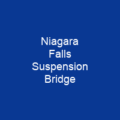Love Canal is a neighborhood in Niagara Falls, New York, infamous as the location of a 70-acre landfill that became the site of an enormous environmental disaster in the 1970s. Hooker Chemical Company used the site to dump 21,800 short tons of chemical byproducts from the manufacturing of dyes, perfumes, and solvents for rubber and synthetic resins. Decades of dumping toxic chemicals harmed the health of hundreds of residents; the area was cleaned up over the course of 21 years in a Superfund operation.
About Love Canal in brief

The canal covers 16 acres of land in the central eastern portion. In May 1894, work on the canal began. Steel companies and other manufacturers expressed interest in opening plants along Love Canal. Love began having a canal dug and built a few streets and houses. The last piece of property owned by his corporation was lost to foreclosure and sold at public auction in 1910. With the project abandoned, the Canal gradually filled with water. In 1988, the New York State Department of Health Commissioner David Axelrod called the Love canal incident a \”national symbol of a failure to exercise a sense of concern for future generations\”. The Love Canal incident was especially significant as a situation where the inhabitants overflowed into the wastes instead of the other way around. The resulting Superfund cleanup operation demolished the neighborhood, ending during 2004. Only one mile of the canal was dug, about 50 feet wide and 10–40 feet deep, stretching northward from the Niagara river. The Canal was lined with thick clay, and drained into the canal. The Niagara Power and Development Company granted permission to Hooker during 1942 to dump the 70-gallon metal or fiber barrels. In 1947, Hooker bought the canal and the landfill and the dumper was closed in the end of the year. The city’s major industries at the time were paper, rubber, plastics, petrochemicals, insulators, and abrasives composed of carbon, carbon, and fiber.
You want to know more about Love Canal?
This page is based on the article Love Canal published in Wikipedia (as of Dec. 04, 2020) and was automatically summarized using artificial intelligence.







